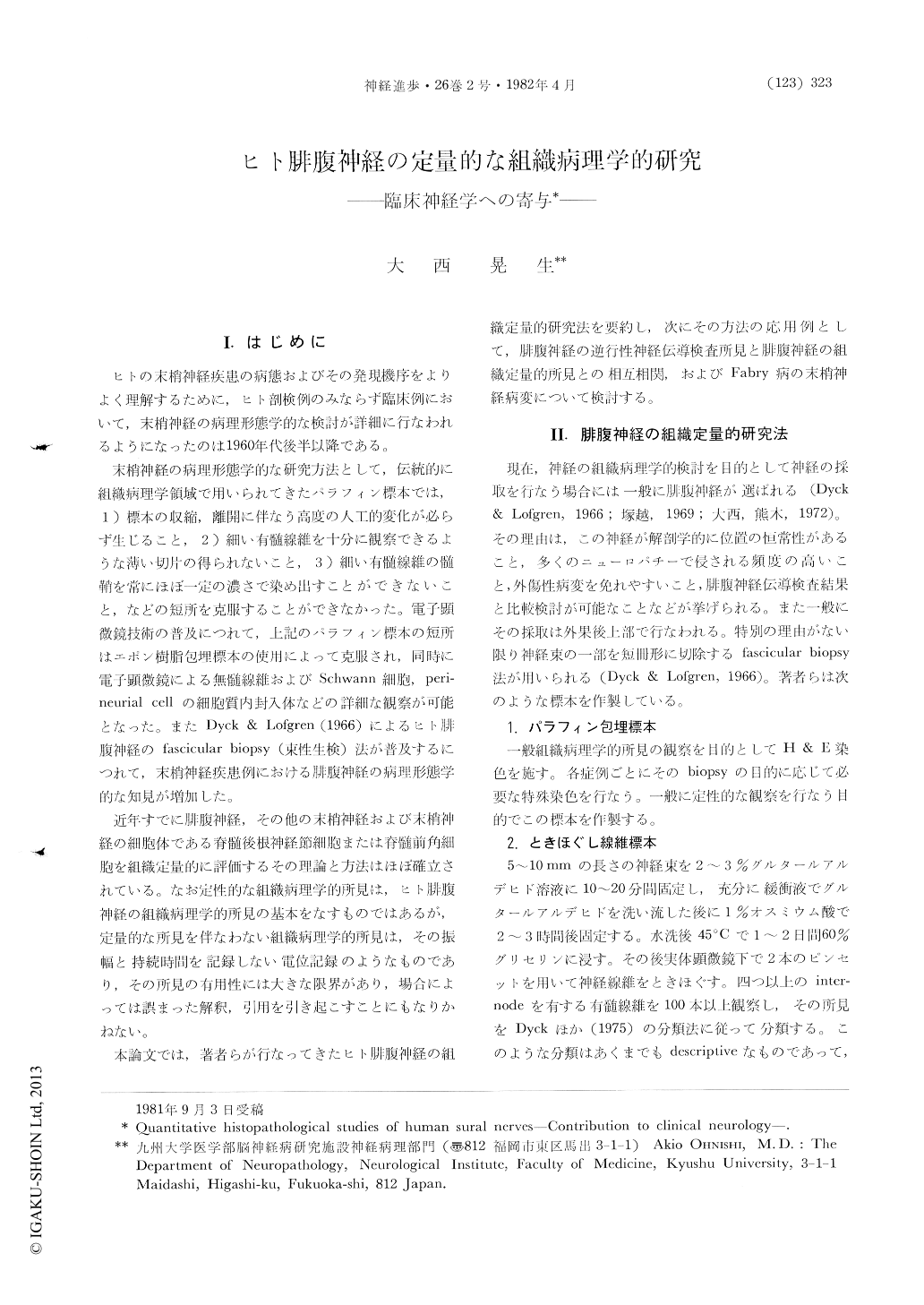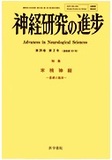Japanese
English
- 有料閲覧
- Abstract 文献概要
- 1ページ目 Look Inside
I.はじめに
ヒトの末梢神経疾患の病態およびその発現機序をよりよく理解するために,ヒト剖検例のみならず臨床例において,末梢神経の病理形態学的な検討が詳細に行なわれるようになったのは1960年代後半以降である。
末梢神経の病理形態学的な研究方法として,伝統的に組織病理学領域で用いられてきたパラフィン標本では,1)標本の収縮,離開に伴なう高度の人工的変化が必らず生じること,2)細い有髄線維を十分に観察できるような薄い切片の得られないこと,3)細い有髄線維の髄鞘を常にほぼ一定の濃さで染め出すことができないこと,などの短所を克服することができなかった。電子顕微鏡技術の普及につれて,上記のパラフィン標本の短所はエポン樹脂包埋標本の使用によって克服され,同時に電子顕微鏡による無髄線維およびSchwann細胞,perineurial cellの細胞質内封入体などの詳細な観察が可能となった。またDyck & Lofgren(1966)によるヒト腓腹神経のfascicular biopsy(束性生検)法が普及するにつれて,末梢神経疾患例における腓腹神経の病理形態学的な知見が増加した。
Histopathological studies of human sural nerves have provided a great deal of informations for the better understanding of the pathological conditionand the pathogenesis of the peripheral nerve disease especially in these 15 years. The methods for the evaluation of the frequency of teased fiber abnormalities, densities of myelinated and unmyelinated fibers, densities of nuclei of Schwann cell, fibroblast and macrophage, clusters of denervated Schwann cell and onion bulb, which are routinely used were briefly presented.

Copyright © 1982, Igaku-Shoin Ltd. All rights reserved.


